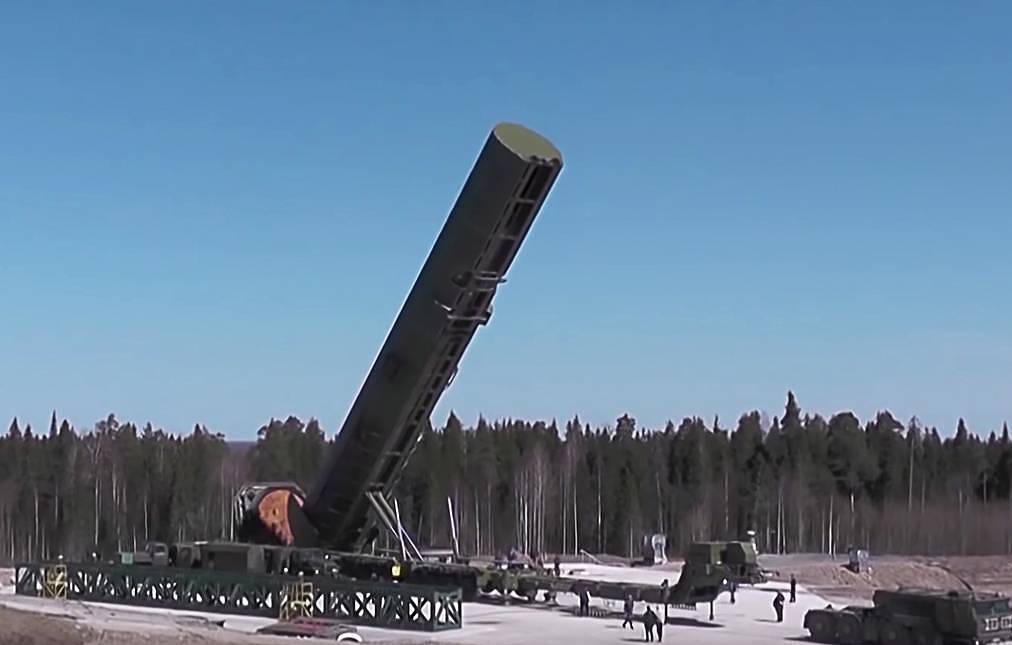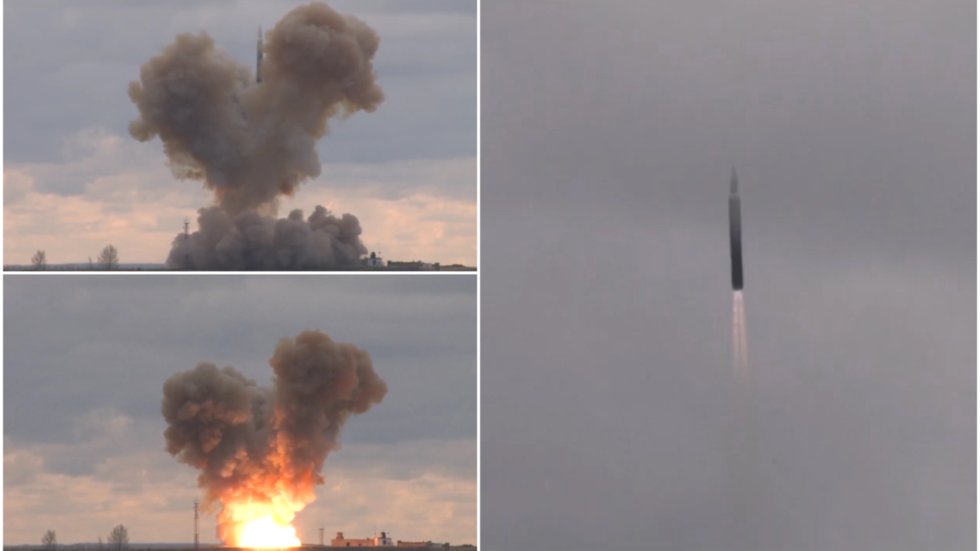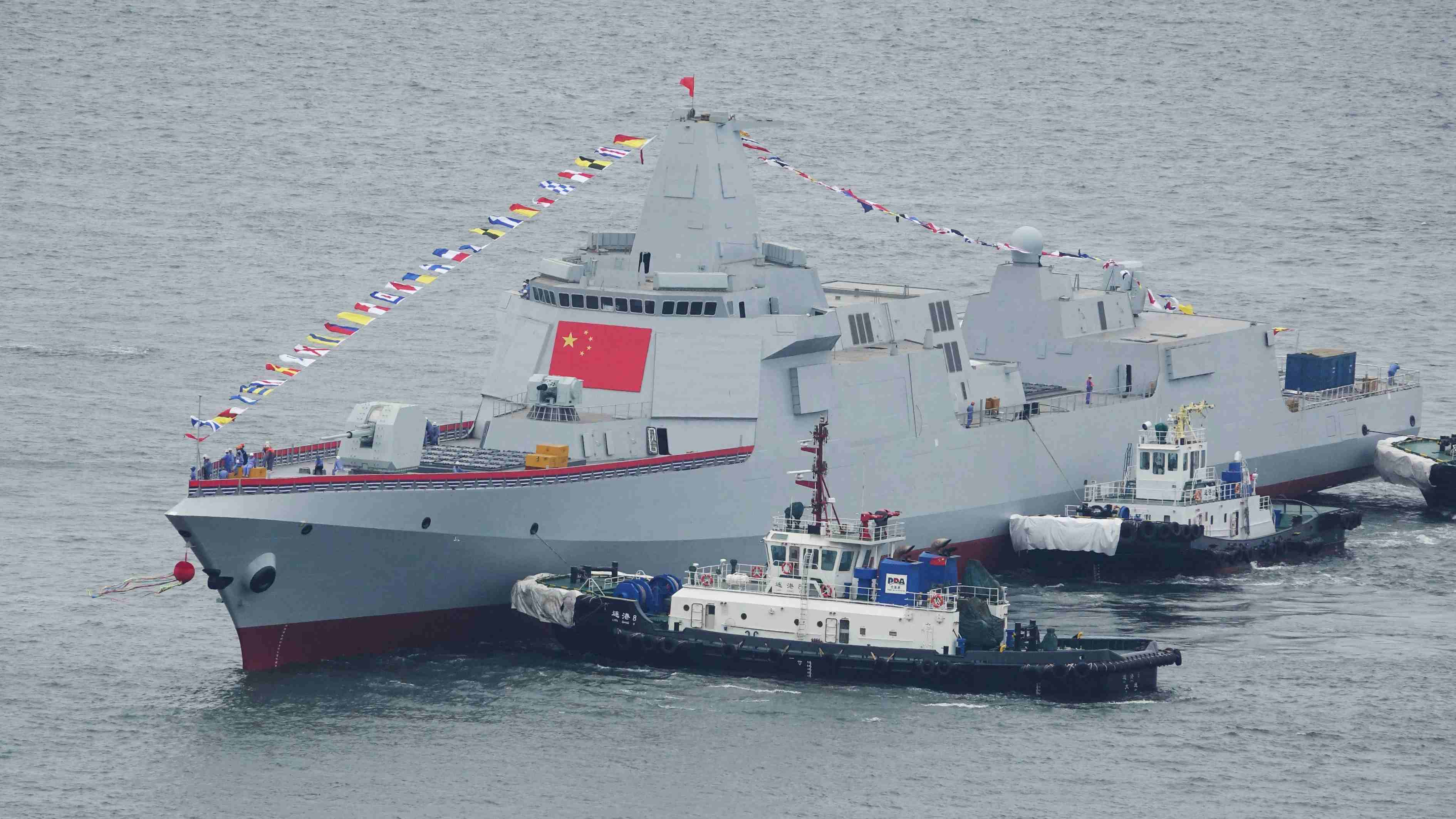Last week, China and Russia conducted separate tests of powerful missiles in a display of their superior military strength and what could be interpreted as a direct message to the US-led West, NATO, and their regional allies.
Russia’s newest heavy-weight long-range missile Sarmat was launched from a test silo in Plesetsk, western Russia. It went approximately 6,000 kilometers (3,700 miles) before hitting targets in Kamchatka, on the other side of the vast country, according to Russian media.
Soon after the launch, Russian President Vladimir Putin in a televised address said RS-28 Sarmat had no counterparts in the world and would make adversaries “think twice” before threatening Russia. The RS-28 Sarmat is dubbed “Satan II” by NATO,
The Russian missile was announced in 2018 as one of six “superweapons” developed by Moscow. The Avangard HGV, the Poseidon nuclear-armed underwater unmanned vehicle (UUV), the Burevestnik nuclear-powered cruise missile, the Kinzhal air-launched hypersonic missile, and the Tsirkon ship-launched hypersonic missile are among them.

The Sarmat intercontinental ballistic missile (ICBM), has been under development for years and is intended to replace the Soviet-era S-18 missiles. These ICBMs were designed to fly across the world, raining multiple warheads down on strategic targets.
The Sarmat’s long-range, estimated to be up to 35,000 kilometers (22,000 miles), lets it cruise around its intended target, avoiding radar and missile defense systems while unpredictably smashing the targets.
EXCLUSIVE | Footage of Russia successful testing of the RS-28 Sarmat (SATAN II) intercontinental ballistic missile yesterday
Speed: 18000km – 20000km in less than 30 minutes; to land in any country
Uses 10 Hypersonic missiles?
Basically, it can wipe the world population pic.twitter.com/XodjFPSuFI
— Sphithiphithi Evaluator (@_AfricanSoil) April 21, 2022
It can carry up to 15 nuclear warheads, each with limited maneuverability, thanks to its massive payload of 10 tonnes. The payload may be replaced with an undetermined number of Avangard Hypersonic glide missiles, which can go further and faster while flying in an unexpected direction to evade missile defenses.

Furthermore, due to the Sarmat’s short initial burn period, the US’s network of heat-detecting satellites will have a harder time spotting its launch, enhancing the missile’s capacity to surprise foes and decreasing the time they have to counter an assault.
In an unusual move in response to Russia’s Sarmat ICBM test, the US flew two RC-135S surveillance planes near Russia’s east coast, probably to gather as much data as possible from Russia’s test.
The US reportedly deployed two surveillance planes at separate altitudes to better observe the Sarmat’s re-entry, or to test classified technology.
China’s YJ-21 Missile
China launched a new hypersonic missile from a powerful Type 055 cruiser one day before the Russian Sarmat was demonstrated. The YJ-21 is part of a series of Chinese missiles meant to be ‘carrier killers.’ It is ultra-fast and has an unpredictable flight path.
Beijing has long been apprehensive of the potency of American aircraft carrier groups and their capacity to travel across the world and exert military dominance.
According to naval expert H I Sutton, the YJ-21 “outwardly resembles the CM-401 design, with the addition of a large booster phase. The CM-401 is roughly analogous to the Iskander missile although its diameter is only 600mm. The new missile may be related to the older CM-401 family, although the resemblance may be coincidental. And it may have a smaller diameter.”
If these estimations are accurate, the YJ-21 might make China’s Type 055 one of the world’s most powerful warships. The Type-346B AESA radar, which is similar to the AN/SPY-6 on Flight III Arleigh Burke destroyers, is installed aboard the class.

The YJ-21 can launch heavy warheads with a range of up to 1,500 kilometers (930 miles), punching directly through an aircraft carrier’s flight deck and quickly eliminating it. The missile is normally air-launched from a bomber.
Recently, in an unprecedented move, Beijing released what appeared to be the first video of a Chinese warship firing a YJ-21 hypersonic anti-ship ballistic missile.
The YJ-21 hypersonic anti-ship ballistic missile is connected to the CM-401 developed by China, according to Sutton. With 112 Vertical Launching System (VLS) cells, the Type 055 could carry a sizable hypersonic arsenal.
The Chinese PLA Navy for the first time showed footage of the launch of a new hypersonic anti-ship cruise missile from a Project 055 destroyer. pic.twitter.com/Tdb6cz3UNR
— rohan panchigar (@rohanpanchigar) April 19, 2022
Other experts believe that using a “skip-glide” flight pattern, the missile has a range of at least 180 miles. This implies that it flies virtually straight up in the beginning, and then skips off the atmosphere one or more times upon re-entry, turning its downward momentum into horizontal motion.
One thing appears to be very clear – both China and Russia appear to be forewarning the US-led block that they have serious weapons of destruction and any interference in the ongoing Ukraine conflict or future Taiwan annexation mission will have serious implications.
- Contact the author at etdesk@eurasiantimes.com
- Follow EurAsian Times on Google News




